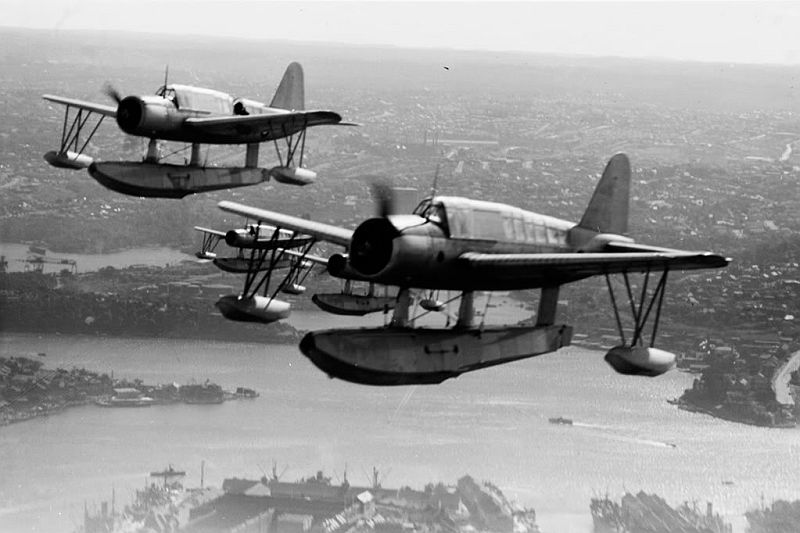- Home
- History
- History of the Base
- UntiA48 Vought-Sikorsky Kingfisher

48 Vought-Sikorsky Kingfisher
Designed as an observation scout for the US Navy, the prototype Vought-Sikorsky XOS2U-1 first flew in 1939 and was the forerunner of over 1,800 OS2U-1, -2, -3s and OS2N-1s. The aircraft became known as the Kingfisher and could be operated as a land-plane or single-float seaplane, although it was used mainly in the latter configuration.
As well as carrying out reconnaissance patrols from coastal bases and catapult-equipped ships, the Kingfishers were also used for rescue operations. On one memorable occasion in 1942, a Kingfisher pilot taxied 40 miles through rough seas to rescue Capt Eddie Rickenbacker who had been lost in the South Pacific.
In April 1942, eighteen Kingfisher seaplanes were shipped to Australia and assembled at RAAF Base Rathmines as A48-1 to A48-18. After a working-up period, the Kingfishers were allocated to No 107 Squadron, which was formed at Rathmines on 10 May 1943. At the time, enemy submarines were operating in Australian waters and the Kingfishers carried out numerous patrols and attacks and recorded a "probable damage" against a German U-boat. Unfortunately, the Kingfisher bore a marked resemblance to the Japanese Rufe seaplane and many of the squadron's early sorties were carried out against gunfire from both friend and foe.
The Kingfishers later operated from St. George's Basin, and the squadron was eventually disbanded on 31 October 1945, when most of the aircraft were phased out of service.
In 1947, Squadron Leader R. Gray operated Kingfisher A48-13 from HMAS Wyatt Earp during the first of the post-war Antarctic expeditions.
TECHNICAL DATA: Vought-Sikorsky Kingfisher
DESCRIPTION:
Two-seat reconnaissance aircraft. All metal structure, with metal and fabric covering.
POWER PLANT:
One 450 hp Pratt and Whitney Wasp Junior R-985-SB3.
DIMENSIONS:
Span 10.95 m (35 ft 11 in); length 10.23 m (33 ft 7 in); height 4.47 m (14 ft 8 in).
WEIGHTS:
Empty 1874 kg (4123 lb); loaded 2722 kg (6000 lb). PERFORMANCE: Max speed 264 km/h (142 kt); Cruising speed 191 km/h (103 kt); initial climb 292 m (960 ft)/min; Range 1852 km (1000nm), Ceiling 13,000ft (3962 m).
ARMAMENT:
One fixed machine-gun firing forward, and one free-mounted gun aft; Provision for 108 kg (240 lb) of bombs under wings.
